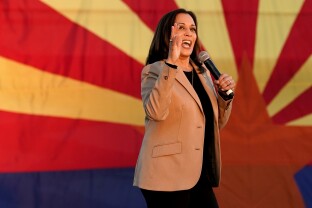Kamala Harris’ emergence as her party’s new presumed presidential nominee immediately renewed hope among Democrats that they could win a quartet of battleground “Sun Belt” states that had seemingly slipped out of reach for Joe Biden.
But Democratic strategists who spoke with NOTUS also have a strong warning: If Harris can’t keep the Midwestern “Blue Wall,” there’s no chance in hell the Sun Belt states would save her.
“If Democrats lose the Blue Wall, then they lose, period. No matter what happens in Georgia, Arizona, it’s just not gonna happen,” Atlanta-based political consultant Fred Hicks told NOTUS. “So they absolutely have to hold the Blue Wall, number one. Number two, you want to hold as many Sun Belt states as possible.”
